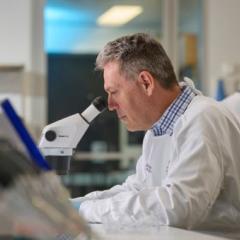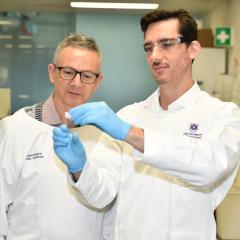Queensland Brain Institute (QBI) scientists are making progress in understanding a rare and deadly form of infant epilepsy with hopes of one day discovering a cure.
Research led by the QBI and UQ’s Institute for Molecular Bioscience (IMB) found that a mutated protein formed in the brain and linked to early infantile epileptic encephalopathy (EIEE), is unstable at normal human temperature.
EIEE, also known as Ohtahara syndrome, is estimated to occur in around 1 in 50,000 births, and children born with the illness have a poor prognosis, with approximately half dying before two years of age.
Dr Sally Martin, lead author of the study performed in Professor Frederic Meunier’s laboratory at QBI, said the illness’s mechanisms are starting to be discovered.
“EIEE’s rarity makes it difficult to study, however there are mutations in around 12 proteins that can result in this syndrome, and one of those is Munc18-1, a protein critically involved in neurotransmission,” Dr Martin said.
“We found that this mutation has a propensity to destabilise and misfold the protein, leading to the formation of clumps in brain cells which may be toxic and impair neurotransmission,” she said.
“At 37 degrees Celsius – our normal body temperature – the protein misfolds, but at lower temperatures it folds correctly,” she said.
“We are still a long way from developing treatments; however, this research is leading us towards ways to accurately correct the folding of proteins important for sending signals between nerve cells.
“If we can reverse folding defects, we may be able to start correcting some of the awful problems EIEE patients have.”
EIEE symptoms form within the first three months of life, often within the first 10 days, with seizures tending to increase over time.
“What you see is short bursts of massive electrical activity in the developing brain, followed by next to no brain activity, which causes massive cellular damage.”
Attempts to treat EIEE with anticonvulsant drugs for mainstay epilepsy have proven ineffectual.
The paper is published in Cell Reports and was supported by funding from the National Health and Medical Research Council and Australian Research Council.
Media: Darius Koreis, +61 7 3346 6353, d.koreis@uq.edu.au; Dr Sally Martin, +61 7 3346 6363, s.martin@uq.edu.au



